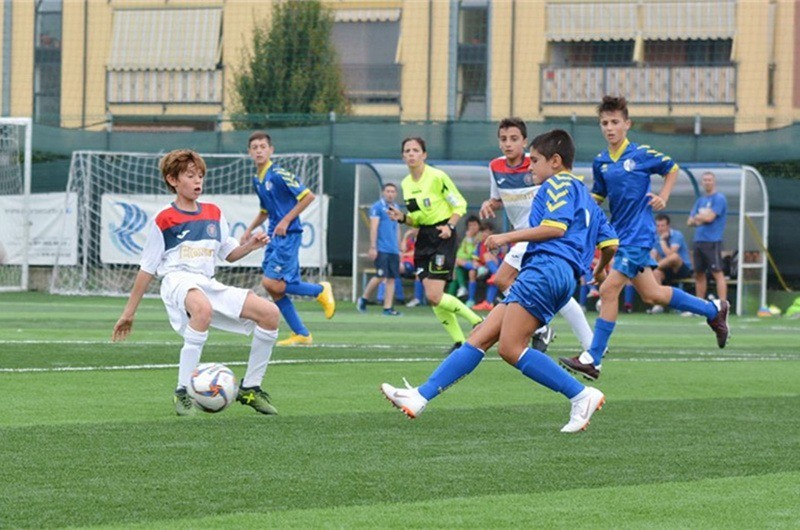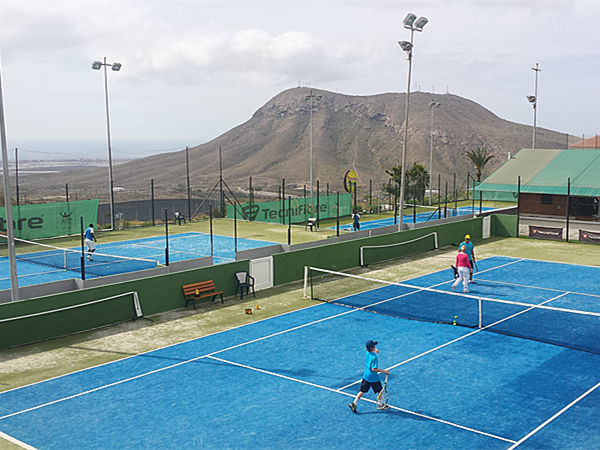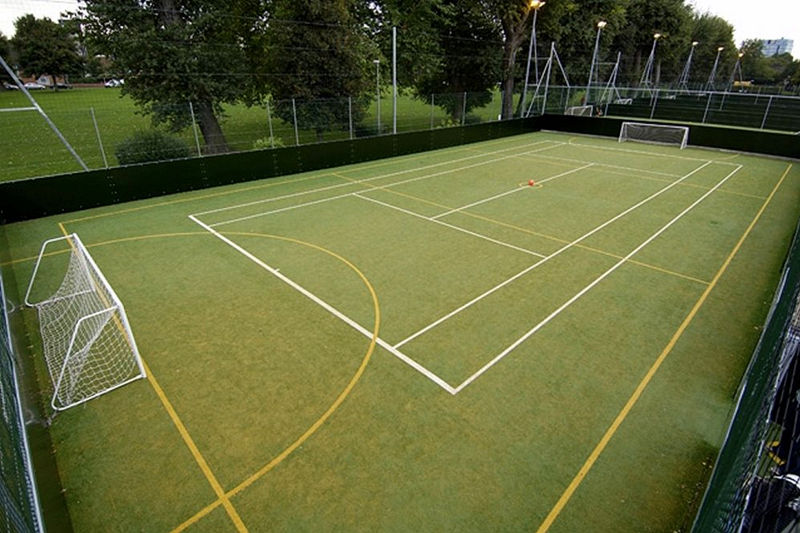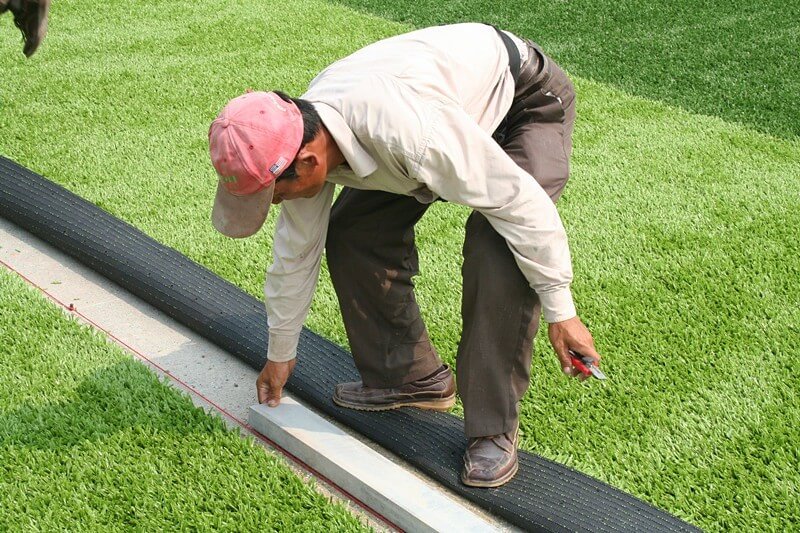Installing football artificial grass requires careful planning and execution to create an exceptional playing surface. This detailed guide provides general information and essential tips for a successful installation. Follow these step-by-step instructions to install football artificial grass on a well-prepared base:
Table of Contents
1. Off-Loading and Preparation:
- Check the pile height, color, and stitch ratio of the football artificial grass before installation.
- Deliver the football artificial grass rolls to the site using a truck.
2. Seam Joining:
- Roll out the football artificial grass rolls across the width of the pitch, ensuring one roll overlaps the other by approximately 50mm.
- Trim one side of the roll with a sharp carpet knife for a straight seam, and cut the other side of the next roll using a steel straightedge to create a clean joint. Fold the rolls back and lay a 30cm wide seaming tape.
- Mix a two-part adhesive using an electric drill and paddle for consistency.
- Apply the adhesive to the seaming tape using a specialist glue spreading machine at the desired spread rate, ensuring complete coverage without excess material spilling onto the base.
- Repeat the process until the entire area is covered and the pitch appears green. (*Note: This description pertains to glued seams. Contact a representative for sewn seam details.)
3. Field Markings and Decorative Markings:
- For permanent lines, shear the respective areas and use hot melt to glue the new colored turf material.
- Shear the shape of the marking from the green field, removing loose fibers through vacuuming.
- Apply adhesive to the seaming tape using a specialized glue spreading machine, covering the entire width without excess material spilling onto the turf.
- Carefully unfold the new colored lines onto the seaming tape and weigh them down with a scaffold board until the adhesive cures.
4. Artificial Grass Infill Installation:
- Use a mechanically-operated spreader to place sand and rubber infill layers between the turf fibers, controlling the fill rate.
- Between layers, mechanically brush and groom the infill to prevent fiber entrapment using a brush machine.
- Continue brushing and filling until reaching the recommended infill level.
- After completing the infill operation, check the infill depth with a depth gauge over a 10m grid of the entire pitch.
5. Construction Exit, Cleanup, and Testing:
Remove the construction entrance, thoroughly clean the area, demobilize equipment, and conduct field testing.
Conclusion:
By following this comprehensive guide, you can successfully install football artificial grass, creating a high-quality playing surface. Pay close attention to details, utilize the recommended techniques, and seek professional assistance when necessary. Enjoy a durable and visually appealing football field that enhances player performance and safety.




